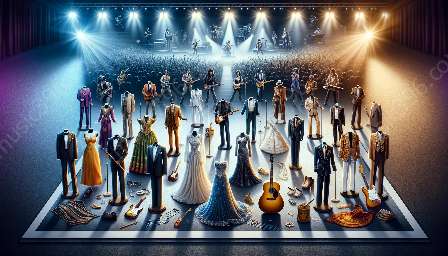Music memorabilia holds a special place in the hearts of fans, and autographs play a significant role in adding value and personal connection to these items. In this comprehensive guide, we’ll explore the world of autograph authentication in music memorabilia, including its significance, the authentication process, and the challenges associated with it.
The Significance of Autographs in Music Memorabilia
Autographs have long been sought-after by music enthusiasts. Whether it’s a signed album, poster, or instrument, an autograph adds a personal touch and sentimental value to the memorabilia. It allows fans to feel connected to their favorite artists, creating a sense of intimacy and uniqueness.
Moreover, autographed music memorabilia is often considered a form of investment, as the value of these items can increase over time. However, the authenticity of the autograph plays a crucial role in determining its true worth.
The Authentication Process
Authenticating an autograph involves a series of meticulous steps to ensure its validity. In the music art and memorabilia industry, this process can be particularly challenging due to the abundance of forgeries and the varying nature of autographs.
One of the primary methods of authentication is through the use of experts or reputable third-party authentication services. These professionals possess extensive knowledge of the artists’ signatures, handwriting, and historical signing patterns. They employ advanced techniques, such as handwriting analysis, infrared light examination, and signature databases, to determine the authenticity of an autograph.
In addition, certain autographs may come with accompanying certificates of authenticity (COA) from recognized authentication companies, providing further assurance to buyers and collectors.
Challenges in Autograph Authentication
The pursuit of authentic autographs in the music memorabilia industry is not without its challenges. The market is inundated with counterfeit signatures, making it difficult for collectors to distinguish between genuine and forged autographs.
Furthermore, the variability of an artist’s signature over time, as well as the sheer volume of signed items, adds complexity to the authentication process. In some cases, the lack of documented provenance or the absence of a clear paper trail further complicates the determination of an autograph’s authenticity.
As a result, buyers and collectors are advised to exercise caution and conduct thorough research before making substantial investments in autographed music memorabilia.
Conclusion
Autograph authentication in music memorabilia is an intriguing and pivotal aspect of the industry. It not only contributes to the sentimentality and value of the memorabilia but also presents challenges that demand expertise and diligence to overcome.
By understanding the significance of autographs, the authentication process, and the associated challenges, enthusiasts and collectors can navigate the realm of music memorabilia with a deeper appreciation for the craftsmanship and authenticity of these prized possessions.
Topic
Historical Evolution of Autograph Authentication in Music Memorabilia
View details
Legal and Ethical Considerations in Autograph Authentication
View details
Forensic Science Techniques in Authenticating Autographs on Music Memorabilia
View details
Cultural Influence on the Perception and Value of Autographed Music Memorabilia
View details
Technological Advancements and Their Impact on Autograph Authentication
View details
Economic Implications of Forged Autographs on the Music Memorabilia Market
View details
Collectors' Strategies for Authenticating Autographs on Music Memorabilia
View details
Market Trends and Consumer Behavior in Autographed Music Memorabilia
View details
Impact of Media and Publicity on the Market for Autographed Music Memorabilia
View details
Connoisseurship and Appraisal of Autographed Music Memorabilia
View details
Globalization and the Market for Autographed Music Memorabilia
View details
Preservation and Conservation of Autographed Music Memorabilia
View details
Intellectual Property Laws and the Authentication of Autographs on Music Memorabilia
View details
Authentication Methods and Technologies in the Music Memorabilia Industry
View details
Psychological Factors in Assessing the Value of Autographed Music Memorabilia
View details
Blockchain and Emerging Technologies in Autograph Authentication
View details
Effect of Celebrity Endorsements on Market Demand for Autographed Music Memorabilia
View details
Challenges and Implications of Counterfeit Autographs on Music Memorabilia
View details
Digital Era and E-commerce's Influence on the Market for Autographed Music Memorabilia
View details
Educational Requirements and Expertise in Autograph Authentication
View details
Impact of Cultural and Historical Events on the Market for Autographed Music Memorabilia
View details
Role of Auction Houses and Appraisal Services in Legitimizing Autographs on Music Memorabilia
View details
Global Expansion and Access to Autographed Music Memorabilia
View details
Implications of Forgeries on the Reputation of the Music Memorabilia Market
View details
Provenance and Chain of Custody in Authenticating Autographs on Music Memorabilia
View details
Counterfeit Detection Methods and Best Practices in Music Memorabilia
View details
Digital Age Challenges and Opportunities in Autograph Authentication
View details
Consumer Awareness and Protection Against Counterfeit Autographs
View details
Influence of Technology and Authentication Innovations in the Music Memorabilia Market
View details
Exploring Diverse Methods for Verifying Autographs on Music Memorabilia
View details
Conserving and Protecting the Integrity of Autographed Music Memorabilia
View details
Role of Science and Technology in Authenticating Autographs on Music Memorabilia
View details
Questions
What are the key factors to consider when authenticating autographs on music memorabilia?
View details
How do technological advancements impact the process of autograph authentication in the music memorabilia industry?
View details
What role does forensic science play in the authentication of autographs on music memorabilia?
View details
How do historical trends in music memorabilia impact the authentication process for autographs?
View details
What challenges are faced when determining the authenticity of autographs on music memorabilia?
View details
What are the legal and ethical considerations in autograph authentication within the music memorabilia industry?
View details
How does cultural context influence the perception and value of autographed music memorabilia?
View details
What role do provenance and chain of custody play in the authentication of autographs on music memorabilia?
View details
How do different types of authentication methods, such as visual inspection, chemical analysis, and handwriting analysis, apply to autographs on music memorabilia?
View details
What impact does the digital age have on the market for autographed music memorabilia?
View details
How do collectors ensure the authenticity of autographs on music memorabilia?
View details
What are the economic implications of forged autographs on the music memorabilia market?
View details
How has the perception of autographs on music memorabilia evolved over time?
View details
What are the psychological factors that influence the value of autographed music memorabilia?
View details
How do changes in technology affect the methods used for autograph authentication in the music memorabilia industry?
View details
What impact do forgeries have on the reputation of the music memorabilia market?
View details
What are the key components of a successful autograph authentication process for music memorabilia?
View details
How do different genres of music affect the demand and value of autographed memorabilia?
View details
What are the key differences in authenticating autographs on vintage versus contemporary music memorabilia?
View details
What are the implications of celebrity endorsements on the market for autographed music memorabilia?
View details
How do collectors and dealers avoid falling victim to counterfeit autographs in the music memorabilia market?
View details
What are the effects of media coverage on the market for autographed music memorabilia?
View details
How does globalization impact the market for autographed music memorabilia?
View details
What role does conservation and preservation play in maintaining the integrity of autographed music memorabilia?
View details
What impact does the internet and e-commerce have on the market for autographed music memorabilia?
View details
How does the process of autograph authentication in the music memorabilia market relate to intellectual property laws?
View details
What factors contribute to the perceived value of autographs on music memorabilia?
View details
How do changes in consumer behavior influence the demand for autographed music memorabilia?
View details
What are the implications of emerging technologies, such as blockchain, in the authentication of autographs on music memorabilia?
View details
What role does education and expertise play in the authentication of autographs on music memorabilia?
View details
How are cultural and historical events reflected in the market for autographed music memorabilia?
View details
What steps can be taken to combat the prevalence of counterfeit autographs on music memorabilia?
View details
How do auction houses and appraisal services contribute to the legitimacy of autographed music memorabilia?
View details























